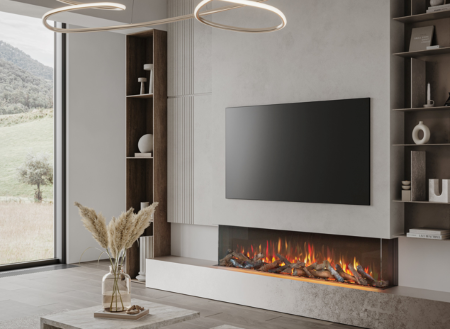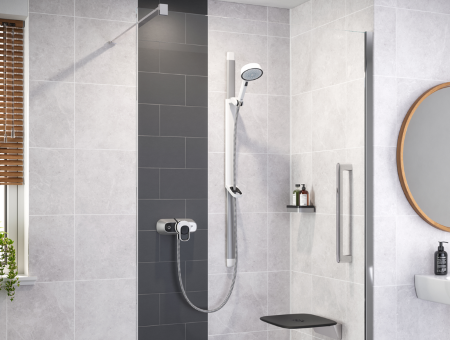Mark Fletcher takes a look at home technology and automation and discovers that you can deploy some pretty nifty kit on a reasonable budget to help make your house a home of the future.
‘The Jetsons’ have a lot to answer for, or for that matter any 60s cartoon or film that was set in the future. The flying car is still not around – in a commercially feasible guise anyway – neither are personal jet packs, hovering buildings and springy hat aerials that go ‘ping’ when you get a message. Admittedly the hovering buildings are a bit pointless, so I for one could live without them, but jetpacks would be awesome.
It is not all a complete write off though. Just because we don’t have what ‘The Jetons’ had, it doesn’t mean we are stuck in the dark ages. In fact there are some great products out there now that would have the Hanna-Barbera cartoonists of the 60s wishing they had thought of it first.
Arguably the most important protagonist of any technology-centric article – be it covering industry, commercial or consumer – is wireless data transfer; either via cellular networks, wide-area networks or home wireless networks. Disposing of the wired shackles of data transfer has really revolutionised a great many aspects of our day-to-day lives – creating the connected society – and the ability to share data from or to wherever you are is opening up multiple new avenues and applications.
Industry and commerce have jumped on the connected society in a big way, but home tech is still somewhat lacking in the breadth of its deployment, with only some of the major players and a few niche suppliers dipping their toes into what I would call non-mainstream technology. Wireless Ethernet is certainly being exploited, but primarily for the applications for which it was originally designed – computers and data-consuming/generating technology such as phones, games consoles and, more recently, TVs and set top boxes.
Examples of more niche home-based applications include wireless home thermostats, such as those from NEST, now part of Google, and Hive from British Gas. Both app-enabled, they allow you to control your heating from your smart phone. Other technology includes smart refrigerators, which can build and mail shopping lists to you, ovens you can activate from a web portal and one thing that I was surprised didn’t catch on was the concept of a family hub tablet/calendar device which O2 used to sell a few years back.
It is hard to nail down why there isn’t so much saturation in the consumer world, especially when you consider that WiFi is now a USP of just about every establishment you care to mention. Price could certainly be an issue, but the technology required is now down to commodity pricing levels, even if they do charge you and extra £300 to have a wireless TV. The other issue is complexity. Networking is not all that intuitive with Mac addresses, firewalls, static IPs and the like. And connecting new devices to home networks using protocols and instructions that might was well be written in Swahili have already got a great many people hurling themselves off this bandwagon.
One of the biggest things on the horizon, which will have a significant impact on the home of the future, is the concept known as the Internet of Things (IoT). Currently, the way a home network is configured is with the router acting as the hub and assigning unique IP addresses (numeric identities) to each connected device, but only within its own local network. The concept behind the IoT is that every single device, person, animal… the list goes on, will have its own unique ID. The idea is that eventually these unique identifiers will give us the ability to transfer data without requiring human-to-human or human-to-computer interaction. You will be able to send a print command from any device to “Steve Smith’s printer” (presuming Steve gives you the necessary permissions beforehand) there will be no complex network identities to deal with; Steve’s printer will be… well… Steve’s printer, no matter what network he has plugged it into. It’s a quite a sobering thought, but like all things, if properly managed, it will be defined in a few decades as one of the information age’s revolutions. Indeed, the fourth industrial revolution is said to be taking place right this very moment because of this concept and the whole idea of the connected enterprise.
So, what can you do with this home network? For a start, the data revolution is already having a huge impact in that corner of your lounge where the TV sits. Most Smart TVs from Sony, Panasonic, Samsung, LG and have Ethernet and/or wireless capabilities, allowing you to stream an incredible amount of additional programming and data services. This TV on demand is driving a lot of complementary development too, with diminutive set top boxes, such as those available from Roku, delivering all manner of content from the terrestrial broadcasters, through a dizzying array of international providers, to Sky, with its Now TV service, which it launched to keep a toe in the IPTV pool.
With affordable 4K TV also just around the corner a very fast internet connection will almost certainly be a pre-requisite, especially concerning the available over-the-air broadcasting bandwidths. 8k is also on the horizon, but this is only really makes a discernible difference on screens greater than 84 inches. Much as it appeals, I for one would never be allowed to have TV that big in my lounge.
This technology is not solely for your viewing pleasure, audio solutions are also exploiting wireless and data capabilities. Many of the leading home audio providers can now give you room-to-room audio solutions that allow you to stream your music from a central hub to any number of connected ‘slave’ units. These central hubs are also mostly internet enabled, giving you access to Spotify, Google Music, Deezer, Napster and any number of other music streaming services. Wireless speakers are also a blessing for home speaker solutions as you no longer need to trail your surround sound wires all over the place.
I am a self-confessed gadget nut and I would love to start with a clean slate in a nice new home – especially one that I could wire up – in conjunction with a bottomless wallet. Having said that, more money than sense and “the latest gadget” are not everything towards having a smart home. I have what I consider a fairly smart home. I am still very comfortable with some of the older tech and have no immediate plans to replace it. My Sony PS3 is (currently) a better media centre than the PS4, and I use it to stream from a Synology network attached storage (NAS) drive, on to which I have deposited all my films, photos and music. My DVD player is a sub-£35 budget unit from Maplins, but it plays every file format under the sun from disc and USB. My issue is that I am not as well connected as I would like to be, but I am capable of doing what I want to do – except access my NAS from outside of the home network – here’s where my networking inexperience comes into play.
Although wireless is currently the bee’s knees, the first thing I would do if I was building a house is make sure that alongside all my electrical wiring, I installed as much CAT 6 cabling and sockets as I could. Wireless may be nice and uncluttered, but wired is often faster (especially the further you are from the router), more robust and less prone to interference from your neighbour’s router. Using this network I would provide a few wireless access points for phones and the like and then plug everything humanly possible into the Ethernet network in preparation for the IoT. I for one look forward to having the ability to update the firmware in my toaster, while lying on a beach in another country.





